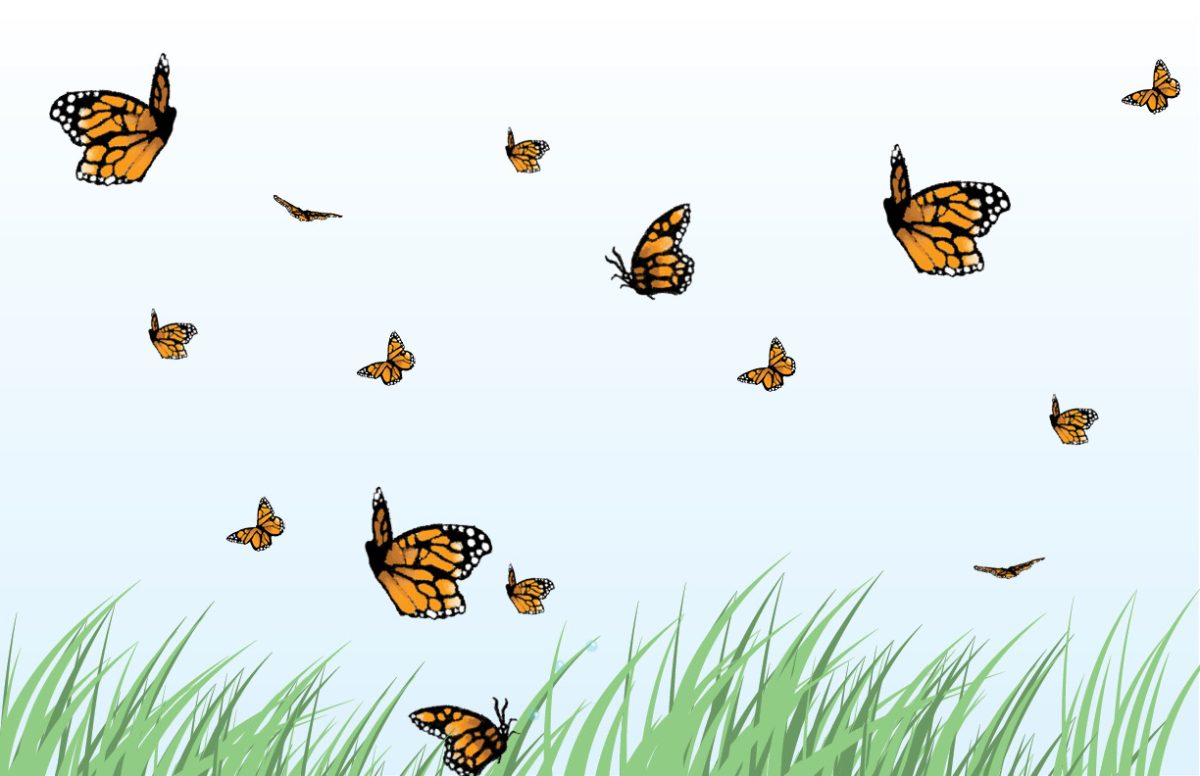Beginning around the second week of September, hundreds of monarch butterflies from Canada will migrate through Kansas to Mexico during the winter months. Monarch Watch, a local migration biology program, strives to focus on monarch butterfly research, education and conservation.
Since its founding in 1992, Monarch Watch has registered around 49,500 monarch butterflies for research tagging. Senior and long-time volunteer Julie Kong has participated in their tagging events.
However, Monarch Watch research project specialist Ann Ryan said they have noticed a decrease in population numbers since the 2014 U.S. Fish and Wildlife Service announced a monarch status review under the Endangered Species Act. In December 2024, 10 years later, the official report was announced and classified Monarch butterflies as a threatened species.
“We have that community interaction with this insect. So [Fish and Wildlife] don’t necessarily want to restrict that, but they’re trying to see what rules they can come up with that will help the monarch but also allow people to still have that cultural interaction with the monarch species,” Ryan said.
Depending on what regulations Monarch Watch will have to follow, Ryan said this announcement creates an uncertain impact for conservation organizations. For example, if there becomes a restriction on the number of monarchs that can be researched, then their educational and research efforts could drastically change.
“Going forward, it could mean that we have to pivot some. It could mean that maybe we can do the same programs, but we just have to have different kinds of permits,” Ryan said.
In addition, rapid temperature changes across the nation have played a role in the program’s research. As Monarch Watch director Kristen Baum said, much of a monarch’s life cycle revolves around temperature.
“Their whole developmental period from egg to adult depends on temperature. And then if they move too far north, too early, they’ll be ahead of the planted milkweed, and their development will be slower,” Baum said.
As Baum continues to research how monarchs are affected by climate change, she said Monarch Watch asks community members to volunteer and support their research efforts.
Coming up on May 10, Baum and Ryan said they invite the community to the annual Spring Open House fundraiser for Monarch Watch’s tagging and research opportunities.
“We’re inviting people in to see our space, see what we have in the lab. Also, [visitors] can tour the garden that will have caterpillars to pet. We’ll have the Douglas County Master Gardeners talk about the programs that they have, and then we’ll have plants to fundraise and benefit the program for all the local insects,” Ryan said.









